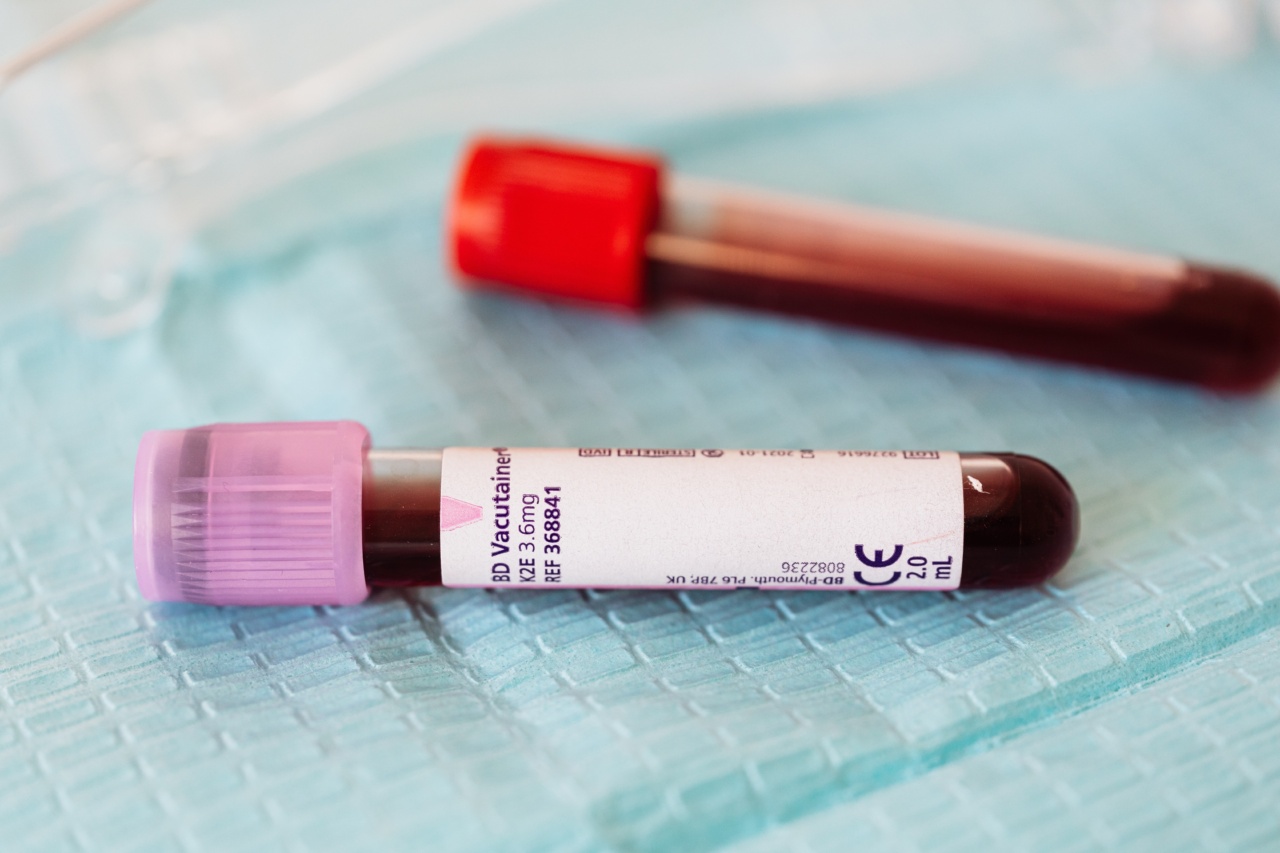Schizophrenia, a severe mental disorder, affects millions of people worldwide. It is characterized by symptoms such as hallucinations, delusions, disorganized thinking, and difficulties in social interactions.
Diagnosing schizophrenia has always been a complex and subjective process, relying on the observation of symptoms and the exclusion of other potential causes. However, recent advancements in medical research have led to the development of a groundbreaking blood test that could revolutionize the diagnosis of schizophrenia.
The Current Challenges of Schizophrenia Diagnosis
Traditionally, diagnosing schizophrenia has been based on a thorough evaluation of a patient’s symptoms and mental state. Psychiatric interviews, observation of behavior, and discussions with family members and caregivers are commonly employed.
However, this diagnostic approach is not foolproof and can be highly subjective. Different healthcare providers may interpret symptoms differently, leading to inconsistent diagnoses.
Moreover, schizophrenia shares symptoms with other mental disorders, making differential diagnosis challenging.
Mental illnesses such as bipolar disorder, major depressive disorder, and schizoaffective disorder can present symptoms similar to those of schizophrenia. Due to these similarities and the lack of specific biological markers for schizophrenia, misdiagnosis rates remain high.
A Promising Breakthrough: The Blood Test
Researchers have long been searching for biological markers that can aid in the accurate diagnosis of schizophrenia.
And now, a team of scientists has made a significant breakthrough by identifying a distinct genetic pattern associated with the disorder. Their findings have led to the development of a simple blood test that can detect schizophrenia with extraordinary accuracy.
The blood test works by analyzing a specific set of genetic variations known as single nucleotide polymorphisms (SNPs). These SNPs are changes in a single nucleotide base within a person’s DNA sequence.
Through extensive research and analysis, the scientists identified a panel of SNPs that are highly correlated with schizophrenia.
By examining a patient’s blood sample and comparing it to the genetic panel, the blood test can determine the likelihood of an individual having schizophrenia.
The test provides a quantitative score, which can be used to confirm or rule out a diagnosis of schizophrenia. Unlike the current diagnostic methods, this blood test provides an objective and reliable measure, significantly reducing the risk of misdiagnosis.
The Advantages of the Blood Test
The introduction of this blood test brings several notable advantages to the field of schizophrenia diagnosis:.
1. Increased Accuracy
The blood test offers a much higher level of accuracy compared to the traditional diagnostic methods. By analyzing the specific genetic markers associated with schizophrenia, the test can accurately identify the presence of the disorder in individuals.
With an objective measure, healthcare providers can make more precise diagnoses and develop personalized treatment plans.
2. Early Detection
Early intervention is critical in managing schizophrenia and improving long-term outcomes. Unfortunately, the current diagnostic process is time-consuming, and delays in diagnosis are common.
The blood test provides a rapid and efficient method of detecting schizophrenia, enabling timely intervention and treatment.
3. Differential Diagnosis
With its ability to analyze specific genetic markers, the blood test can help differentiate between schizophrenia and other mental disorders with similar symptoms.
This capability reduces the risk of misdiagnosis and ensures appropriate treatment plans are implemented.
4. Objective and Reliable
Unlike subjective psychiatric interviews and observations, the blood test provides an objective measure of schizophrenia. This objectivity eliminates much of the diagnostic variability and enhances the reliability of the diagnosis.
5. Reduced Stigma
Schizophrenia is often stigmatized due to misconceptions and the lack of objective diagnostic measures.
By providing a definitive diagnosis through a blood test, individuals with schizophrenia can receive the validation and support they need without enduring societal skepticism.
Implementation and Future Prospects
Although the blood test shows immense promise, further research and validation studies are necessary before it becomes widely available for clinical use.
Large-scale trials involving diverse populations are essential to confirm the test’s accuracy and reliability.
If successfully validated, the blood test could greatly improve the lives of individuals with schizophrenia and their families. Early detection and intervention would lead to better management of symptoms and improved overall quality of life.
Additionally, the test could guide the development of new treatment approaches, tailored to the specific genetic profiles of patients.
Moreover, the biological markers identified through this research could open new avenues for understanding the underlying mechanisms of schizophrenia.
The genetic variations associated with the disorder could provide valuable insights into the development of targeted therapies and potential preventive measures.
In conclusion, the development of a simple blood test for diagnosing schizophrenia marks a major breakthrough in the field of mental health.
With its ability to provide an objective and accurate measure of the disorder, this test has the potential to revolutionize schizophrenia diagnosis worldwide. As further research progresses, we can anticipate a future where individuals with schizophrenia can receive timely diagnosis and appropriate treatment, leading to improved outcomes and a more compassionate society.





























